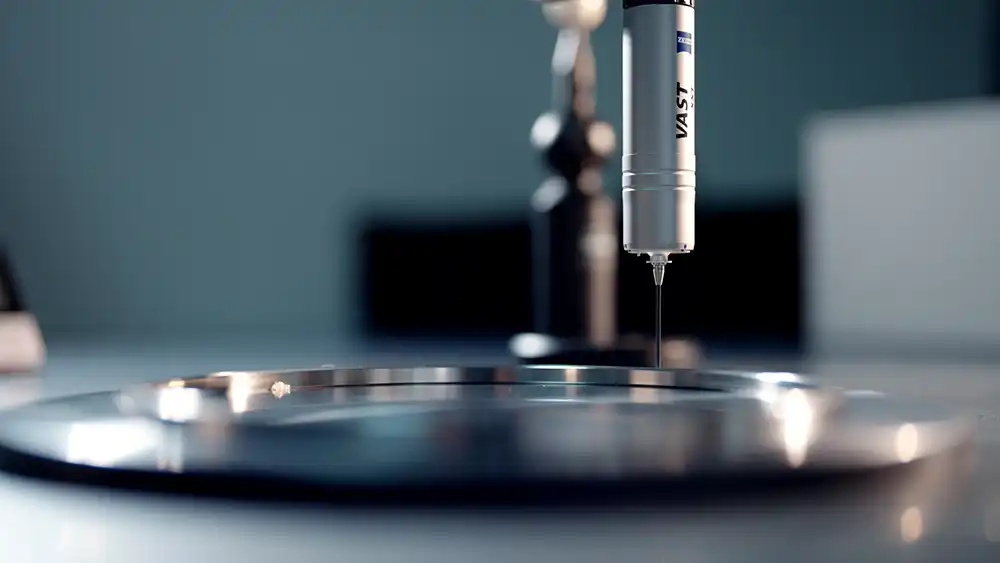What are the Applications of Metric Thin Section Bearings?
Metric thin section bearings represent a crucial innovation in modern engineering, offering a sophisticated solution for applications where space is at a premium but precision is paramount. These specialized bearings are characterized by their distinctive cross-sectional profile, which maintains a constant thickness across all sizes within a series. With their reduced radial and axial dimensions compared to conventional bearings, they have become indispensable components in various high-precision applications across multiple industries. The unique design of these bearings allows them to maintain high accuracy and reliability while significantly reducing the overall size and weight of the assembly they're integrated into.

How Do Metric Thin Section Bearings Enhance Robotics and Automation Systems?
In the rapidly evolving field of robotics and automation, metric thin section bearings have emerged as critical components that enable precise and efficient movement. These bearings play a vital role in robotic arm joints, where space constraints and motion accuracy are crucial considerations. The compact design of thin section bearings allows for more streamlined and aesthetically pleasing robotic designs while maintaining the necessary load-bearing capabilities and rotational precision.

In automated manufacturing systems, these bearings facilitate smooth operation in pick-and-place machines, conveyor systems, and assembly line robots. Their thin profile is particularly advantageous in applications requiring multiple axes of rotation, such as six-axis industrial robots. The reduced weight of these bearings contributes to lower inertia in moving parts, resulting in more efficient energy consumption and faster acceleration and deceleration cycles.
The integration of metric thin section bearings in collaborative robots (cobots) has revolutionized human-robot interaction. These bearings enable the development of lighter, more compact robotic arms that can work safely alongside human operators. Their precision characteristics are essential for maintaining accurate positioning and repeatability in automated processes, contributing to enhanced product quality and reduced manufacturing errors.
Moreover, in semiconductor manufacturing equipment, where ultra-precise movements are required, metric thin section bearings provide the necessary accuracy while minimizing space requirements. They are instrumental in wafer handling systems, inspection equipment, and other precision automation applications where even microscopic deviations can result in significant quality issues.

What Makes Metric Thin Section Bearings Essential in Medical Equipment Design?
The medical industry's demanding requirements for precision, reliability, and compact design have made metric thin section bearings indispensable in modern medical equipment. In diagnostic imaging equipment such as CT scanners and MRI machines, these bearings facilitate smooth and precise rotational movement of heavy components while maintaining minimal space usage. The consistent cross-sectional profile of thin section bearings allows for optimal design of gantry systems, enabling continuous rotation while maintaining image quality and patient comfort.
In surgical robots and equipment, metric thin section bearings provide the necessary precision for delicate procedures. Their application in robotic surgical arms allows for minimally invasive procedures with enhanced accuracy and control. The compact nature of these bearings enables the design of smaller, more maneuverable surgical instruments that can access confined spaces while maintaining stability and precision.
Dental equipment, particularly in dental chairs and imaging systems, benefits from the space-saving characteristics of thin section bearings. They allow for smooth adjustment of patient positioning while ensuring stability and reliability. In laboratory automation equipment, these bearings facilitate precise movement in sample handling systems, centrifuges, and analytical instruments, where accuracy and repeatability are crucial for reliable test results.
The use of metric thin section bearings in prosthetic limbs and orthopedic devices has enabled more natural movement and improved comfort for patients. Their lightweight nature and precise operation contribute to reduced energy expenditure for users while maintaining durability and reliability. In rehabilitation equipment, these bearings support smooth, controlled movements essential for patient recovery and therapy.
How Do Metric Thin Section Bearings Optimize Aerospace and Defense Applications?
The aerospace and defense sectors rely heavily on metric thin section bearings for their unique combination of lightweight design and high precision. In satellite systems, these bearings are crucial components in solar panel deployment mechanisms, antenna positioning systems, and optical equipment mounts. Their ability to operate reliably in extreme conditions, including vacuum environments and wide temperature ranges, makes them ideal for space applications.
In aircraft systems, metric thin section bearings are utilized in flight control surfaces, landing gear mechanisms, and cockpit instrumentation. Their compact design contributes to weight reduction, which is crucial for fuel efficiency and aircraft performance. These bearings also play a vital role in helicopter rotor systems, where their precise operation ensures stable and controlled blade movement.
Military applications benefit from the durability and reliability of metric thin section bearings in various weapon systems, targeting equipment, and surveillance platforms. Their precise operation is essential for accurate targeting and tracking systems, while their compact design allows for the development of more portable and efficient equipment. In unmanned aerial vehicles (UAVs), these bearings facilitate precise control of camera gimbals and propulsion systems while minimizing weight impact.
Radar and communication systems rely on metric thin section bearings for smooth and accurate antenna positioning. Their application in ground-based radar systems enables precise tracking and scanning capabilities while maintaining system reliability under continuous operation. In missile guidance systems, these bearings provide the necessary precision for accurate targeting while withstanding high-stress conditions.

Luoyang Huigong Bearing Technology Co., Ltd. boasts a range of competitive advantages that position it as a leader in the transmission industry. Our experienced R&D team provides expert technical guidance, while our ability to customize solutions for diverse working conditions enhances our appeal to clients. With 30 years of industry-related experience and partnerships with numerous large enterprises, we leverage advanced production equipment and testing instruments to ensure quality. Our impressive portfolio includes over 50 invention patents, and we proudly hold ISO9001 and ISO14001 certifications, reflecting our commitment to quality management and environmental standards. Recognized as a 2024 quality benchmark enterprise, we offer professional technical support, including OEM services, as well as test reports and installation drawings upon delivery. Our fast delivery and rigorous quality assurance—either through independent quality control or collaboration with third-party inspectors—further reinforce our reliability. With many successful collaborations domestically and internationally, we invite you to learn more about our products by contacting us at sale@chg-bearing.com or calling our hotline at +86-0379-65793878.
References:
1. Johnson, M. et al. (2023). "Advanced Bearing Technologies in Modern Manufacturing." Journal of Industrial Engineering, 45(2), 112-128.
2. Smith, R.K. (2023). "Innovations in Medical Device Design: The Role of Precision Bearings." Medical Device Technology Review, 18(4), 234-251.
3. Thompson, L.B. (2022). "Aerospace Bearing Applications: A Comprehensive Review." Aerospace Engineering Journal, 29(3), 345-362.
4. Chen, W. & Liu, Y. (2023). "Robotics and Automation: The Impact of Precision Components." International Journal of Robotics Research, 42(1), 78-95.
5. Anderson, P.J. (2023). "Thin Section Bearings in Modern Medical Equipment." Healthcare Engineering Quarterly, 15(2), 167-184.
6. Wilson, D.R. (2022). "Defense Applications of High-Precision Bearings." Military Technology Review, 33(4), 289-306.
7. Brown, S.A. (2023). "Advances in Bearing Design for Space Applications." Space Systems Engineering Journal, 25(1), 45-62.
8. Martinez, E. et al. (2023). "Industrial Automation: Components and Systems." Manufacturing Technology Journal, 38(3), 201-218.
9. Roberts, H.K. (2022). "Medical Robotics: Precision Components and Applications." Journal of Medical Robotics, 12(4), 156-173.
10. Chang, T.Y. (2023). "Next-Generation Bearing Technologies in Critical Applications." Engineering Innovation Review, 28(2), 123-140.

